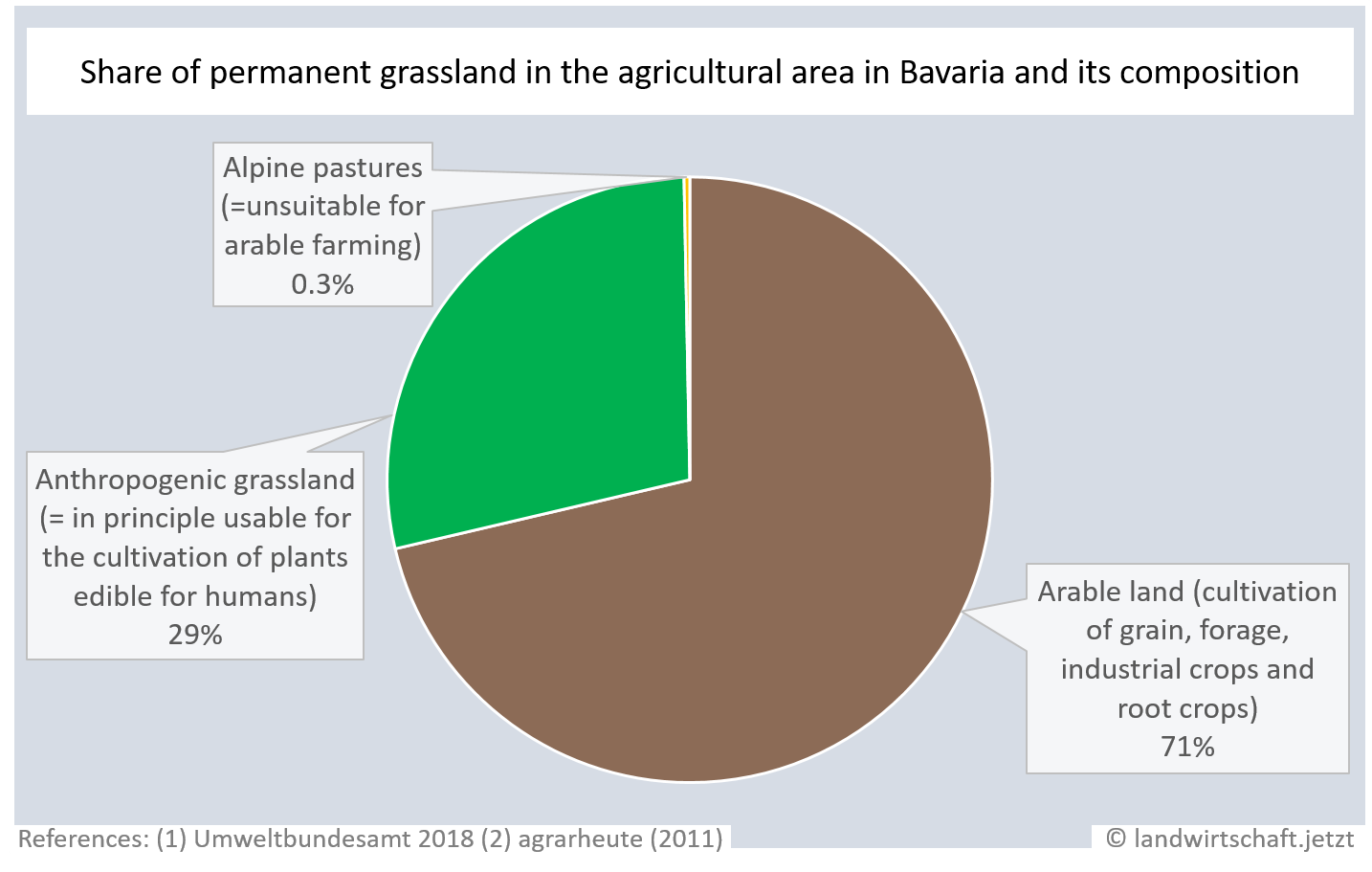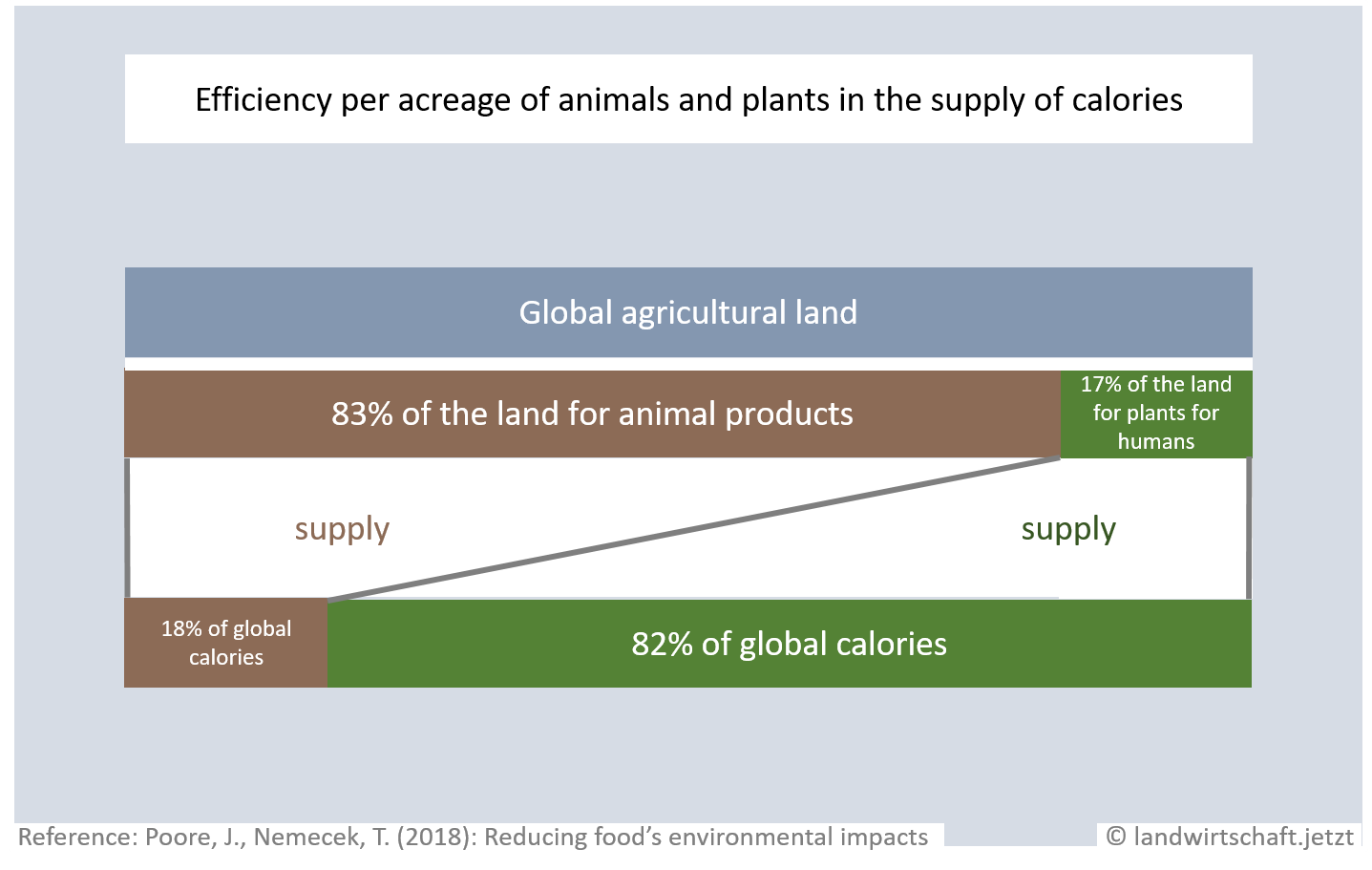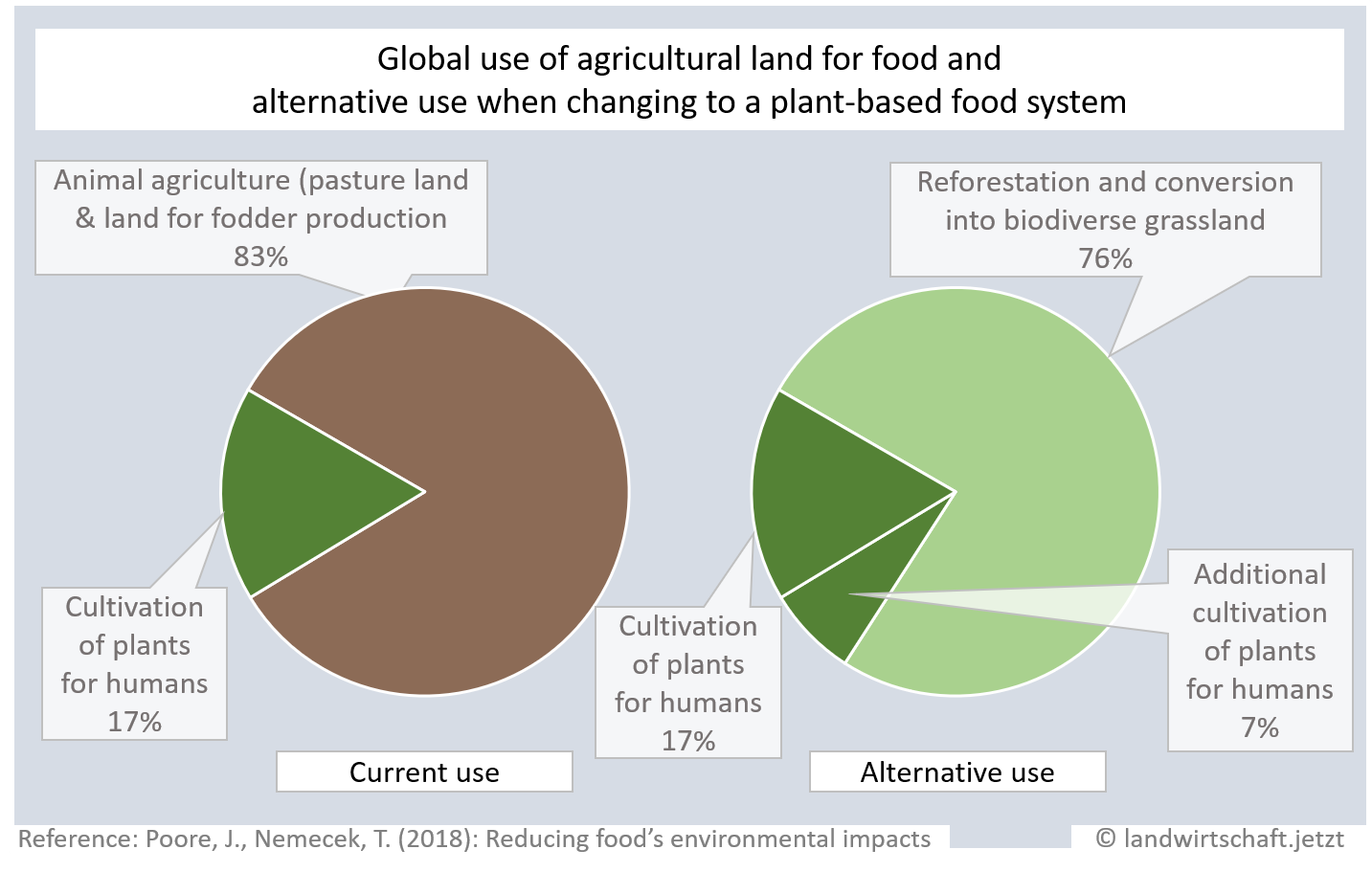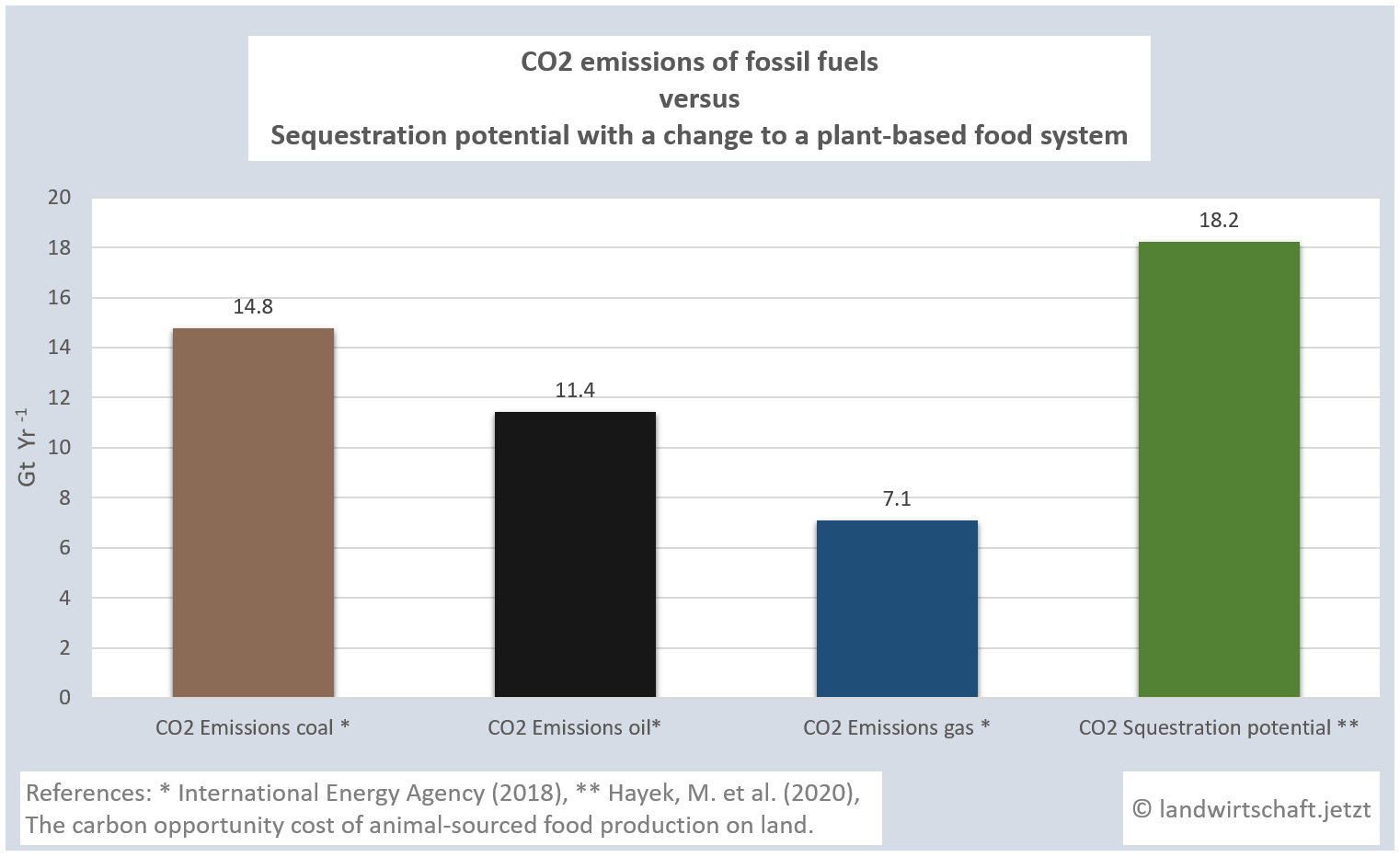Myths: In many places in Germany, animal agriculture is the only way to produce food.
The statement is based on the assertion that there are many areas in Germany on which no plants edible for humans can be grown, but only feed for animals. In fact, slightly more than a quarter (28%) of the agricultural land is permanent grassland and is mainly used to grow grasses to feed dairy cows and beef cattle ([13], p.45). However, this permanent grassland is not natural native grassland (steppe, savanna) due to low rainfall or climate, but anthropogenic grassland that was formerly forest [30]. Both precipitation and nutrient content of the soils allow in principle the cultivation of plants edible for humans. Only areas that are poorly accessible to agricultural equipment are unsuitable for selective plant cultivation. In Germany, these are light pastures in the Alpine and other mountain regions. However, they account for only 0.3% of agricultural land. Only 0.8% of beef cattle and 0.1% of dairy cows are supplied with grasses via these areas [5].
Without animal agriculture, however, a large part of the agriculturally usable area is not needed anyway, so that both the very small proportion of light pasture land can remain uncultivated and the grassland - where it makes sense - can be further renaturalized (e.g. by converting it into forest, moorland). Additionally, portions of cropland used for forage can be reforested or converted to biodiverse grasslands.
The fact that humans are not dependent on animal food was officially confirmed by the American Society for Nutrition in 2016, among others. Accordingly, a purely plant-based diet is suitable for all stages of the life cycle, including pregnancy, lactation, infancy, childhood, adolescence, older adulthood and for athletes. The consumption of animal products, on the other hand, is the cause of certain diseases, including ischemic heart disease, type 2 diabetes, hypertension, certain types of cancer and obesity [8].
The University of Oxford confirmed in a study that plant-based diets are both the healthiest and the most climate-friendly [7]. It is scientific consensus that the production of animal products requires many times more land compared to plant-based alternatives. A global meta-study by Oxford University proves the inefficiency: worldwide, 83% of agricultural land is used for the production of meat, aquaculture, eggs and milk, while these products provide only 18% of food calories and 37% of protein [6]. In Germany, about 60% of agricultural land is used for animal husbandry ([22], p.32), but this figure increases significantly if the land used for the production of imported feed were included.
Since the human body does not need animal products, land used for the production of animal products can thus be released. 76% of the total areas used for food can be afforested or converted into peatland or biodiverse grassland [6].





